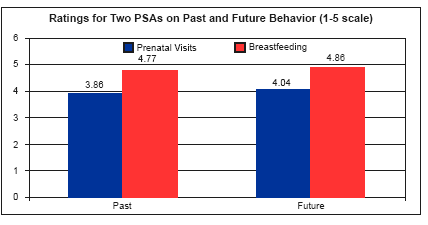In July 2000, CECHE tested the impact of four maternal and child health public service announcements (PSAs) on childbearing women in South India. Produced in 1998 as part of a series of television health promotion messages developed in CECHE’s media training program in Punjab, India (see Monitor, Vol. 9.2, http://www.ceche.org/publications/monitor/vol-9/monfal-win01.pdf), these PSAs addressed:
 visiting a doctor during pregnancy, breastfeeding, preparing to use a trained birth attendant during birthing and oral rehydration. They featured vignettes about a mother and her pregnant daughter using a semi-dramatic format, and were broadcast on national television in Punjab and screened on television in local district health clinics. For use in South India, the PSAs were translated into Tamil and shown to socially and economically disadvantaged women from the urban slums of Chennai. The research objective was to assess whether exposure to a specific PSA would predispose the viewer to adopt the behavior promoted in the spot. Syracuse University Newhouse School-trained researcher Ms. Kalyani Subbiah conducted the fieldwork under the direction of Dr. Fiona Chew.
visiting a doctor during pregnancy, breastfeeding, preparing to use a trained birth attendant during birthing and oral rehydration. They featured vignettes about a mother and her pregnant daughter using a semi-dramatic format, and were broadcast on national television in Punjab and screened on television in local district health clinics. For use in South India, the PSAs were translated into Tamil and shown to socially and economically disadvantaged women from the urban slums of Chennai. The research objective was to assess whether exposure to a specific PSA would predispose the viewer to adopt the behavior promoted in the spot. Syracuse University Newhouse School-trained researcher Ms. Kalyani Subbiah conducted the fieldwork under the direction of Dr. Fiona Chew. Results of the testing were finalized in 2002 and revealed the following:
- The PSAs on prenatal doctor visits and breastfeeding elicited high scores for past practice as well as future behavior (see chart), indicating that the viewers were knowledgeable and experienced in prenatal and infant health care, and motivated to use the advice, and that the PSAs served to reinforce existing behaviors.
- Past and future behavior scores for the PSA on using a birth attendant were low, which suggested that this practice was not common in Chennai, possibly because hospitals were easily accessible and birth attendants not used.
- The PSA on oral rehydration received moderate scores for past behavior and slightly higher scores for future behavior, suggesting that the women found this practice helpful and would employ oral rehydration if and when the need arose.
- Television is the most effective medium for reproductive health communication because more than 75% of the group watches television, and 58.8% took actions to improve their health, home, childcare, food shopping and traditional medicine based on what they heard or saw on TV.
The contrasting environments of the original rural target audience in Punjab and the current urban test subjects in South India may account for the minor impact of two of the PSAs.
[Next News Article]